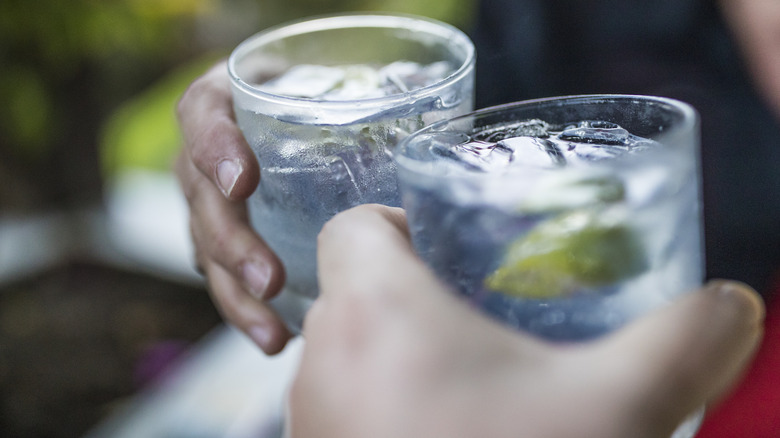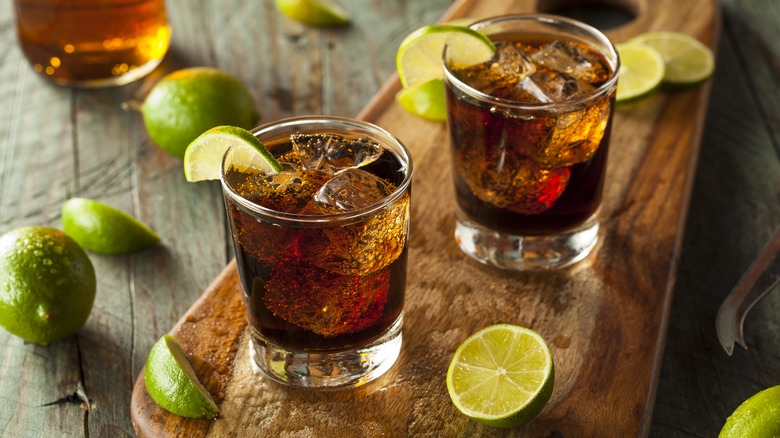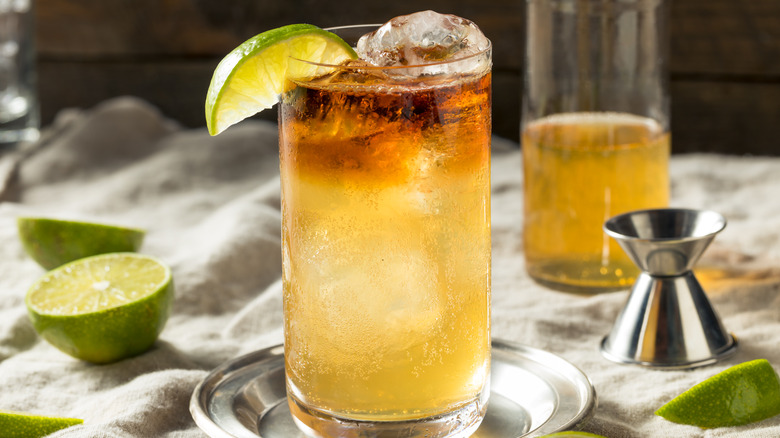The Exact Difference Between A Cocktail And A Mixed Drink
When you're browsing through drink recipes, you'll often find the terms "cocktail" and "mixed drink" used interchangeably. Most of us don't give it a second thought — isn't a cocktail just another type of mixed drink? It's linguistically sound, but if you were to ask a bartender about this, they'll most likely tell you that no, they're two completely different kinds of drinks!
As of now, however, even though there's a general awareness among bartenders that there's indeed a difference between the two, you'll probably get different answers from each person you ask. Although this isn't a new issue, there's still an ongoing debate among mixologists about where exactly to draw the line between a cocktail and a mixed drink. So, as of now, it's still down to how a bartender sees and defines their crafts.
But fortunately for us, the whole thing isn't entirely ambiguous. There's still a consensus on a few key differences that can help us distinguish between a cocktail and a mixed drink: The number of ingredients in the recipe, how complicated the drink is to make, and the amount of skill it takes for the bartender to whip up the drink.
Simplicity defines a mixed drink
Let's start first with a mixed drink. This category is defined by its simplicity and is composed of only two ingredients: A spirit plus a mixer. Spotting them on a bar's menu is quite simple most of the time: If the name tells you all you need to know about what's inside, then more often than not, it's a mixed drink.
One famous example of this is the classic gin and tonic. You don't need to look at the full recipe to know that it's a drink made of gin and tonic water. The only thing that's missing is the garnish (a wedge of lime on the rim) and you have a bold and boozy drink ready to go. The naming convention also goes for many other famous mixed drinks, such as the whiskey and Coke. But remember, while many mixed drinks follow this pattern, some exceptions don't play by this rule. For instance, the black Russian, made with Kahlua and vodka, can also be considered a mixed drink.
Most people new to mixology will start by making a mixed drink first for the obvious reason of it being the simplest (and cheapest) recipe to try and to get an idea of how liquor would taste when combined with other ingredients. Mixed drinks are also often made to mask out the taste of bottom-shelf alcohol to make them more palatable to drink, so they're not just for mixing enthusiasts alone!
Cocktails are where it gets complicated
When a recipe calls for three or more ingredients, you're stepping into cocktail territory. A cocktail is usually considered a combination of three key elements: The base, which is often an alcoholic spirit; the modifier, which enhances and balances the base's taste; and the finishing touch, or "perfume", that adds the final layer of flavor, often through bitters and syrups. Note that none of these ingredients have to be alcoholic. So, a dark 'n' stormy (rum and lime juice topped with ginger beer) qualifies as a basic cocktail, as does a virgin piña colada made only from the cream of coconut, pineapple juice, and whipping cream.
Some people separate cocktails from mixed drinks by the level of craftsmanship that goes into the drink, as well. With mixed drinks, you simply stir the two main ingredients together. But cocktails tend to take a lot more elbow grease to make. The bartender will have to stir, shake, muddle, layer, and blend to put out a drink that's not only complex in flavor but also visually appealing. There's a unique level of showmanship here that you simply don't get when you're making mixed drinks.
However, this doesn't mean that mixed drinks are somehow inferior to cocktails. Both have their place in mixology catering to different tastes, mixing skills, and occasions. Sometimes, a quick whiskey and Coke hits the spot better than fussing over a shaker to craft a classic hurricane!


